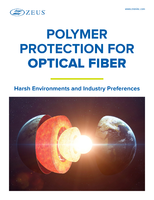Tough Automotive Composites Solve Solar PV Issues for Roof-Top Systems, Improving Installation, Functionality, & Costs
Share:
EINDHOVEN, THE NETHERLANDS - A long-time plastics-industry executive with 23 years' experience in technical and commercial roles has founded a new company here to develop and commercialize a unique, lightweight solar photovoltaic (PV) module technology that harnesses the benefits of injection-molded automotive-grade composites to solve numerous issues with conventional roof-mounted PV modules utilizing aluminum frames.
The company, called TULiPPS(TM) Solar B.V., is currently developing prototypes for testing by early customers, and has a goal of being commercial by 2012 with products initially focused on light, flat roofs common to large industrial buildings. Preliminary work on the company's integrated COSMOS(TM) PV module design shows the patent-pending system will reduce weight and costs, speed installation, increase energy output per unit area, lower maintenance, and improve functionality vs. conventional systems.
Conventional solar PV modules for flat roofs have numerous issues. Current installation technology requires considerable labor, which accounts for a significant percentage of the total cost of ownership for such systems. In fact, labor costs have become a significant percentage of total cost as module prices have declined over several decades.
Another issue with traditional module installations is that their height and angle of tilt necessitate a separate frame and support structure (generally aluminum) in which the glass PV module sits, plus ballast (usually concrete block or stones) that is loaded onto the support structure's flat base. The ballast stabilizes panels under high-wind conditions or near the edge of roofs where wind vortices are common. Hauling ballast up to a roof and distributing it throughout a large solar array not only is time consuming and hard work for installers, but adds so much mass that the systems are often too heavy for safe use on "light" flat roofs that otherwise would be ideal locations for PV panels. The only alternative to ballast for light flat roofs is drilling through the roof membrane to bolt modules to the understructure, an option deemed unacceptable due to cost, time, and the risk of causing leaks.
Developed in partnership with leading companies in the automotive composites, roofing, and PV industries, and with financial support from the Province of Noord-Brabant in the Netherlands, the new COSMOS module system from TULiPPS has been carefully designed to address deficiencies with conventional PV systems, take full advantage of automotive "lightweighting" strategies, and to bring greater value to all members of the solar PV supply chain - from the PV module manufacturer, module installation companies, building owners, and investors. Key to the success of the COSMOS system is the combination of tough automotive-grade composites, an integral frame and support system with plug-n-play functionality, thin-glass PV modules, and a proven roof-anchor system that does not penetrate the roof membrane. Each component offers special benefits to the system.
Central to the system's design is a thin (2-mm/0.08-inch) glass PV laminate that is integrally bonded to the composite module base, forming a strong box-beam structure that eliminates the need for an external frame and reduces weight by 50% or more. This helps the system achieve a low roof load of less than 10 kg/m2 (2 lb/ft2). Owing to a much flatter installation angle (5o), shadowing of units further back in an array is greatly reduced, allowing rows of modules to be placed much closer together - on the order of 0.3m (1 ft) apart rather than 0.6-1.5m (2-5 ft) apart. Although the shallower angle is considered "less efficient" at generating energy on a per-module basis, the fact that more modules can be installed per unit area leads to a reduction in the cost per watt of energy generation and shorter payback time on the investment. In fact, this represents a fundamental shift in philosophy for the solar industry.
Earlier, when the cost of individual modules was high, the goal was to achieve optimum efficiency for each module. Now that module costs are lower but the balance of systems costs are still relatively high, the focus is on maximizing the number of modules per roof. Since the number-one goal at TULiPPS was (and still is) to reduce the overall cost of PV systems, the ability to put far more modules on a roof safely and quickly helps reduce system costs by achieving the highest energy output (cost per watt-peak) at the lowest investment costs per unit area.
In addition, TULiPPS has focused significant effort in its design work to help integrate features and functions that will make the modules easier and faster to install, effectively reducing labor as well as material costs. For example, plug-n-play functionality permits modules to be quickly connected to low-profile feet assuring rapid but secure installation or removal. Also, a proven roof anchor system that uses no screws or bolts and does not penetrate the roof membrane helps further reduce installation time and labor costs. The lightweight, smooth-edged modules are also safer for workers to lift, carry, and install. And since the modules are essentially frameless, there are no edges or corners to trap dirt and dust or encourage the growth of algae. Debris simply washes off, helping keep the units operating efficiently.
The durable materials used in the support system - long-fiber thermoplastic (LFT) polypropylene (PP) composites - were carefully formulated to provide high bending strength at very-low weight. Preliminary flame retardancy testing indicates the materials will qualify with a V-0 flame-retardance listing with Underwriters Laboratories Inc. (UL®) 94 specifications in a halogen-free/ECO-compliant formulation, enabling modules to meet current and future requirements for roof-mounted polymeric components. Since TULiPPS plans to warrant its units for 25 years, materials also have been formulated for exceptional, long-term weatherability and ultraviolet (UV) stability. Special colorant packages have been formulated to broaden the LFT color palette from black and natural (typical automotive-industry offerings) to also include grey, green, and blue without interfering with mechanical properties. Inline compounding and molding on commercial scale equipment have also verified that the new materials process easily and produce parts with an excellent balance of physical and mechanical properties even under accelerated aging tests. And unlike aluminum frames, there is no need to electrically ground the support structure, because the polymers are inherently non-conductive.
Inventor, founder, and managing director, Paul Stassen of TULiPPS envisions that his new COSMOS system will become not only a new PV platform (technology tree) but also the industry standard for light and conventional flat roofs as well as building-integrated PV (BIPV) systems globally.
"For 40 years, the automotive industry has proven that replacing metals with plastics offers the advantages of weight reduction, higher production efficiencies, and feature integration, which lead to better products with more functionality produced at lower costs using less energy," explains Stassen. "As I considered my own experience and that of my colleagues from the automotive plastics market, I wondered whether this knowledge could be applied to make better and less-costly solar panels." Two years of hard work and focused intra-industry collaboration later, Stassen's company has filed numerous patents, is building 300 prototype modules for customer testing, and plans to be commercial next year.
"Together with our partners in the plastics, roofing, and PV industries, we have poured our collective knowledge and experience into designing the next generation of solar PV modules," continues Stassen. "The true power of this lightweight system lies in the functional integration we were able to achieve with our tough automotive-grade composite module system. We believe this module system has great international sales potential and will be a significant contender in the international drive for less costly and more efficient photovoltaic installations."
TULiPPS Solar B.V. is a startup company with patent-pending technologies for the next generation of solar PV modules. The company is currently building prototypes that will subsequently be tested by several customers. It hopes to be commercial with its initial "plug-'n-play" products designed for light flat roofs by 2012. For more Information, see: www.tulipps.com/, or eMail: sales@tulipps.com or phone: +31 (0) 40.7516.290, or mail: TULiPPS Solar B.V., High Tech Campus 9, 5656 AE Eindhoven, The Netherlands.
® UL is a registered trademark of Underwriters Laboratories, Inc.
(TM)TULiPPS and COSMOS are trademarks of TULiPPS Solar B.V. COSMOS product development is sponsored by the PROVINCIE NOORD-BRABANT.
Media Contacts:
Paul Stassen
TULiPPS Solar B.V., stassen@tulipps.com
Phone: +31.(0).6.462.30452
EINDHOVEN, THE NETHERLANDS - Plastics-industry executive, Paul Stassen, has founded TULiPPS Solar B.V. to develop and commercialize a unique, lightweight solar photovoltaic (PV) module technology that harnesses the benefits of injection-molded automotive-grade thermoplastic composites to solve numerous issues with conventional roof-mounted PV modules utilizing aluminum frames. The company has filed multiple patent applications, is currently developing prototypes for testing by early customers, and hopes to be commercial next year with products initially focused on light flat roofs. Preliminary work on the company's integrated COSMOS(TM) PV module design shows the system will reduce weight and costs, simplify installation, increase energy output per unit area, lower maintenance, and improve functionality vs. conventional systems. Here, Stassen operates a direct-long-fiber (D-LFT) thermoplastic inline compounding / compression molding unit by Dieffenbacher GmbH + Co. KG at development partner, voestalpine Plastic Solutions' facility during production of test plaques for material evaluation.
(TM)TULiPPS and COSMOS are trademarks of TULiPPS Solar B.V.




